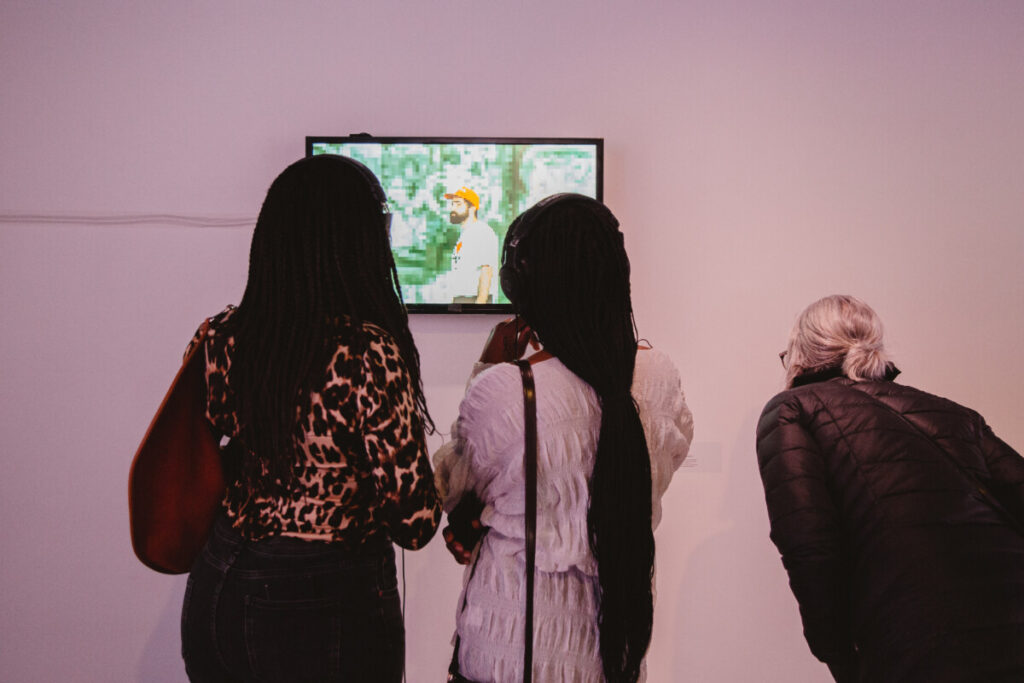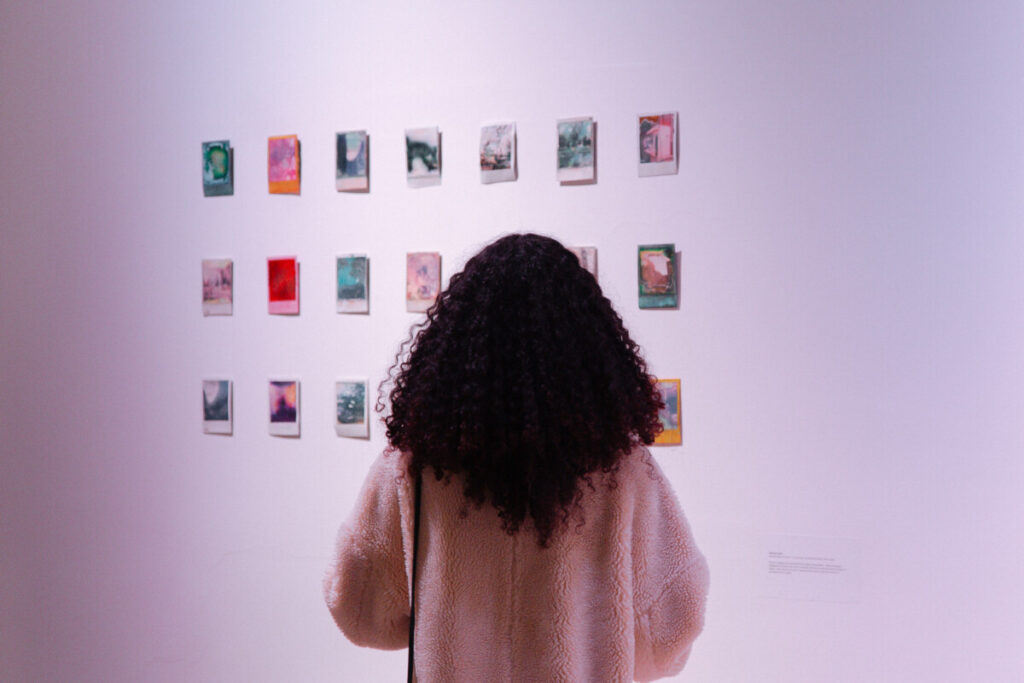The vernissage of FASA’s new exhibition took place last Saturday, March 11, at the Eastern Bloc in Ahuntsic-Cartierville, displaying works in varying mediums from 10 different artists
Shams, the Arabic word for “sun,” seems like the perfect word to describe this exhibition, because it shines the light on the unheard voices of proudly Arabic artists.
Nesreen Galal is the curator of FASA’s new exhibition. She is FASA’s outreach coordinator and a fourth-year Concordia student double majoring in studio and computation arts.
Galal conceived the idea for Shams after having co-organized many shows for artists of different ethnicities through the CSU. She found that there wasn’t enough representation for Arab people.
“I thought it would be cool to have an opportunity to have fine arts and non fine arts students who identify as Arab to have a space, and focus on marginalized voices as well such as women, queer [people], immigrants, disabled people, and refugees,” she said.
Galal drew initial inspiration from American-Palestinian author Edward Said’s book Orientalism, which explores the west’s depiction of eastern culture.
“Arabs are perceived in a western-dominant perspective, especially in Canada where its perception is affected by America’s dominant perspective. We’re defined as barbaric or as terrorists or even stereotyped as people in fantasy lands like in Aladdin,” said Galal.
For this reason, it was necessary to provide Shams as a safe space for the attributed artists.

Co-creator of furniture workshop Atelier Bon Train Rafaël Khoury displayed an installation in the exhibition, called A lesson between two sculptures. It’s composed of three pedestals: the middle one holds a couple of notebooks containing Arabic and English scribbles, while the other two pedestals each hold a strange sculpture resembling uneven bookshelves composed of shattered marble and walnut wood.
“They are explorations in self-compassion, one of the primary themes of the installation are the exploring of self, reorienting of self, and being allowed to do so,” said Khoury. “The sculptures are a divergence of traditional furniture, and the script is also me trying to get in touch with part of my story, as a child of immigrants, but in my own way.”
Similar to Khoury, communications alumnus and musician Amira Faradj grew up out of touch with Arab culture despite being raised by Algerian parents. “Because it was always in my household, I felt disdain towards it for some reason. Maybe it was because I wanted to fit in with my peers who were not from that area,” said the musician. “It’s only recently that I’ve come around to explore my identity in a way that feels like mine. I’ve never felt a connection to my country of origin until I realised that I can make that thing my own.”
Faradj, who DJs as a hobby, presented egypt91 at the expo, which is a 35-minute mix of drum and bass/house music blended with sounds of what the west perceives Arabic music to be. This was accompanied by old footage of Faradj’s father’s trip to Egypt in 1991, collaged with other flamboyant visuals.
Ranime El Morry, a third-year studio arts major, presented the second portrait in their series called Just A Lookalike. The acrylic on canvas is of a mask made of some sort of malleable paper. It represents the unconscious social strategy of autistic masking.
According to El Morry, who has been diagnosed with medium support needs on the spectrum, autistic masking is a unique process through which people with autism assume a different personality to each person they interact with.

“It’s very hard to mix different groups of people in the same room, because we’re very different, and a lot of people diagnosed with autism don’t notice that they are masking,” explained El Morry, referring to their artwork. “You wear this paper and it moulds [metaphorically], and it can easily change but it can easily unmold, but it feels heavy.”
Dona Maria Mouaness, who immigrated from Lebanon a year ago in pursuit of studio arts studies at Concordia, created a terracotta bust of an unknown woman with tribal Bedouin face tattoos. “It started out as a self portrait. I wanted it to be more than that, I wanted it to represent women who identify with it or feel any kind of connection to her. She represents the resistant Arab womanhood.”
The sense of unity is strong in this exhibition. Every artist has a different story and relation with their culture, yet they take strong pride in their identity, regardless of how prevalent it is in their lives.




